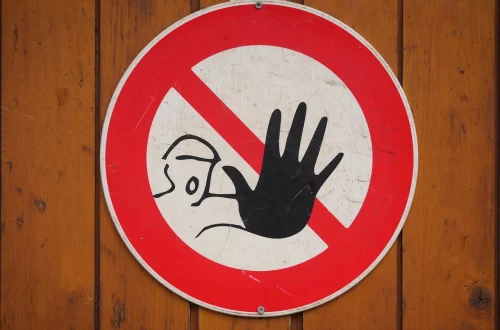
Essential Guide to Choosing the Right Ladder Feet for Safety
Choosing the right ladder feet is essential for ensuring safety and stability while working at height. The feet of a ladder play a crucial role in preventing slips and falls, which are among the most common accidents associated with ladder use. Whether you are a professional tradesperson, a DIY enthusiast, or simply someone who occasionally needs to access high places, understanding the different types of ladder feet and their intended applications is vital for maintaining safety.
Ladder feet are designed to provide grip on various surfaces, including concrete, wood, and grass. Each type of surface presents its own challenges, and the right ladder feet can make a significant difference in how well your ladder performs. Additionally, the material and design of the ladder feet can affect their durability and overall effectiveness. As you consider your options, it’s important to take into account the specific tasks you will be performing as well as the environment in which you will be using the ladder.
In the following sections, we will explore various aspects of ladder feet, including their types, features, and how to choose the right ones for your needs. Understanding these elements will empower you to make informed decisions, enhancing not only your efficiency but also your safety while working at height.
Understanding Different Types of Ladder Feet
Ladder feet come in various designs, each tailored for specific uses and environments. Understanding these types can help you select the right ladder feet for your situation.
One of the most common types of ladder feet is the rubber foot. These are typically made from durable rubber and provide excellent grip on smooth surfaces such as tile or wood floors. Rubber feet are designed to compress slightly when weight is applied, which helps to increase friction and reduce the risk of slipping. They are ideal for indoor use and can be found on many standard extension ladders and step ladders.
Another popular option is the spike or pointed foot. These are particularly useful for outdoor applications, especially on soft or uneven ground. The sharp tips of spike ladder feet dig into the soil, providing a secure anchor that prevents the ladder from slipping or tipping over. However, they are not suitable for indoor use, as they can damage flooring and create safety hazards.
For versatile applications, some ladder feet are designed with interchangeable tips. These feet often come with a standard rubber base but can be fitted with spikes or other attachments depending on the terrain. This flexibility allows users to adapt their ladders for different environments without needing multiple ladders.
In addition to these types, there are also specialized feet designed for specific tasks. For example, some ladder feet have wider bases to distribute weight more evenly, which can be beneficial when working on unstable surfaces. Others may feature additional features like locking mechanisms to further enhance stability.
When choosing the right type of ladder foot, consider the surface you will be working on and the specific tasks at hand. Each type of foot has its strengths and weaknesses, and selecting the appropriate one can significantly enhance your safety and efficiency.
Key Features to Look For in Ladder Feet
When selecting ladder feet, various features should be taken into consideration to ensure you choose the most suitable option for your safety and performance needs.
One of the key features to look for is material quality. Ladder feet made from high-quality rubber or durable plastics can withstand wear and tear, providing better grip and longevity. Ensure that the material is resistant to environmental factors such as UV rays, which can degrade lower-quality materials over time.
Another important feature is the design of the foot itself. Non-slip designs, such as those with textured surfaces, can enhance grip and stability. Some ladder feet are designed with additional features, such as shock-absorbing technology, which can reduce the impact of sudden movements or shifts in weight. This can be particularly important for individuals who frequently work on ladders for extended periods.
Additionally, consider the size and shape of the ladder feet. Wider feet can provide greater stability, especially on uneven surfaces, while narrower feet may be more suitable for tighter spaces. Some feet are designed with a tilt feature that allows them to adjust to the angle of the surface, ensuring a level ladder regardless of uneven terrain.
Compatibility is another critical factor. Make sure that the ladder feet you choose are compatible with your specific ladder model. Many manufacturers provide specific feet designed for their ladders, ensuring a perfect fit. Using incompatible feet may compromise the safety and performance of your ladder.
Lastly, take into account any specific certifications or standards that the ladder feet meet. Feet that comply with safety regulations can provide an added layer of assurance that they have been tested for performance and safety.
How to Properly Maintain Ladder Feet for Longevity
Maintaining ladder feet is essential for ensuring their longevity and effectiveness. Regular care can help prevent wear and prolong the life of your ladder, which is an important investment in your safety.
Start by regularly inspecting the condition of your ladder feet. Look for signs of wear, such as cracks, tears, or excessive smoothing of the rubber. If you notice any damage, replacing the feet promptly is crucial. Using ladders with worn or damaged feet can significantly increase the risk of accidents.
Cleaning your ladder feet is also essential. Dirt, mud, or debris can accumulate on the feet, reducing their grip and effectiveness. Use a damp cloth or sponge to wipe them clean after each use. For stubborn dirt, a mild soap solution can help, but ensure that the feet are thoroughly rinsed and dried afterward to prevent any residue that could affect grip.
When storing your ladder, keep it in a dry place away from direct sunlight. Prolonged exposure to UV rays can degrade the materials, especially rubber. If your ladder feet are removable, consider storing them separately to prevent any deformation.
If you are using ladder feet with spikes or other specialized features, ensure that they are stored safely to prevent damage. Sharp points can cause injuries or puncture surfaces if not handled properly.
Lastly, consider implementing a regular maintenance schedule. Depending on how often you use your ladder, checking and maintaining the feet every few months can help ensure that they remain in good condition. This proactive approach can help prevent accidents and costly replacements in the long run.
In conclusion, choosing the right ladder feet is a critical aspect of ladder safety. By understanding the various types available, considering key features, and maintaining them properly, you can enhance your safety and extend the life of your ladder. Always prioritize safety when working at height, and invest time in selecting and caring for your ladder equipment to ensure optimal performance.
This article does not constitute medical advice. For any health-related issues, always consult a qualified healthcare provider.




